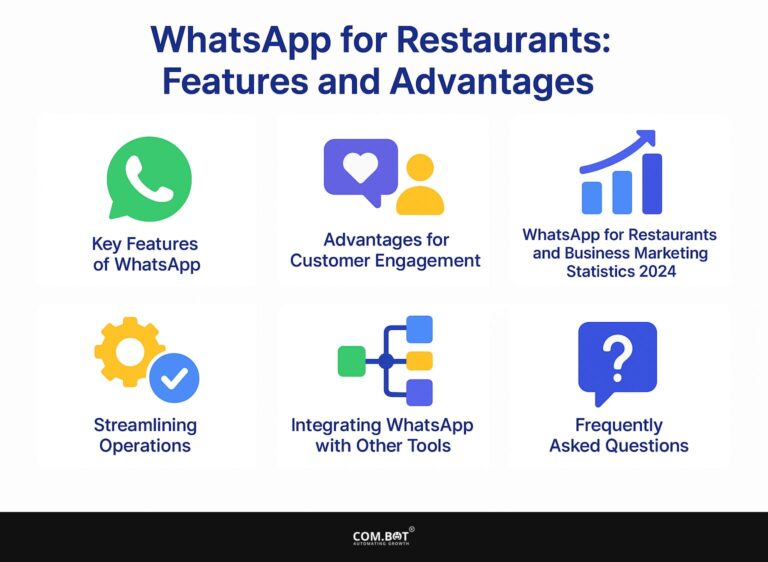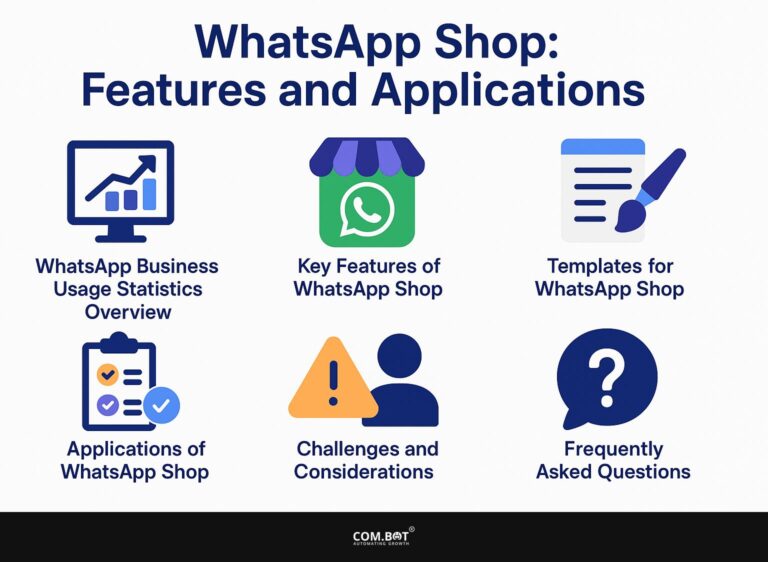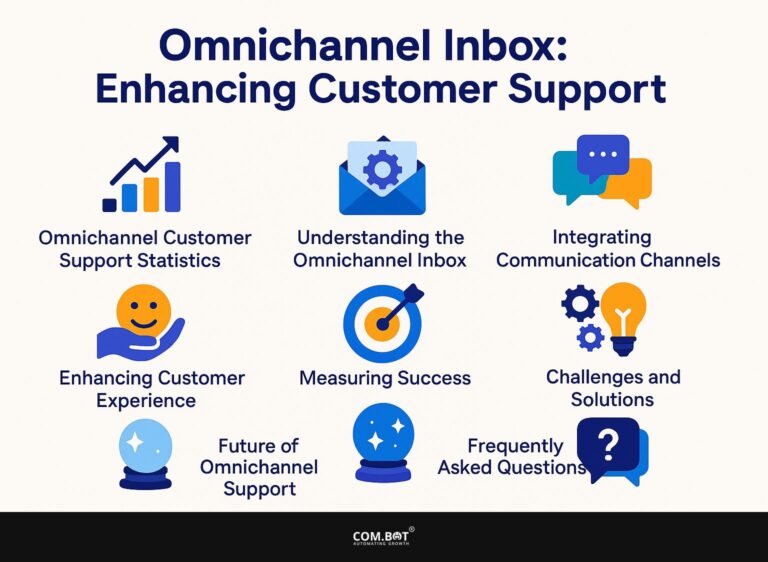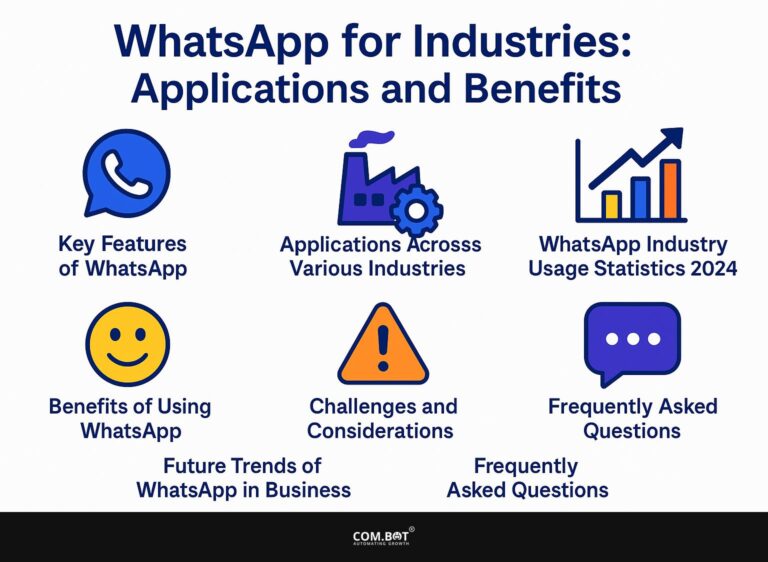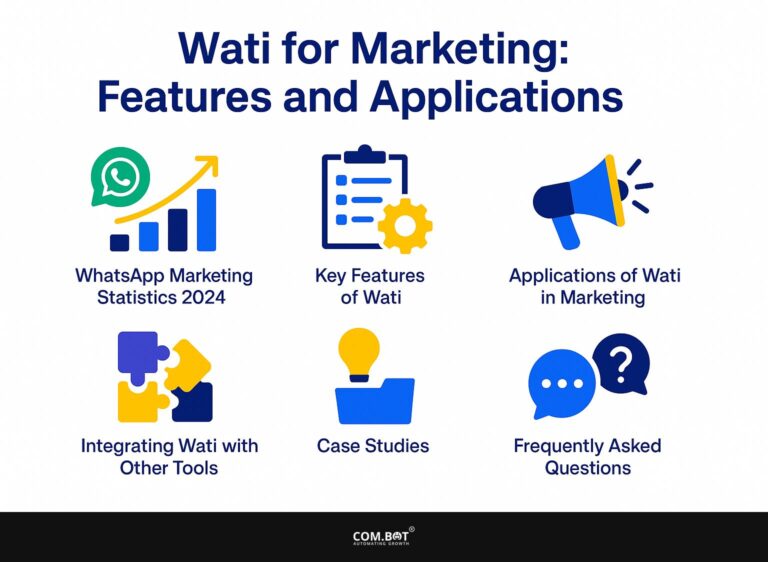How to Implement Account Verification with WhatsApp API
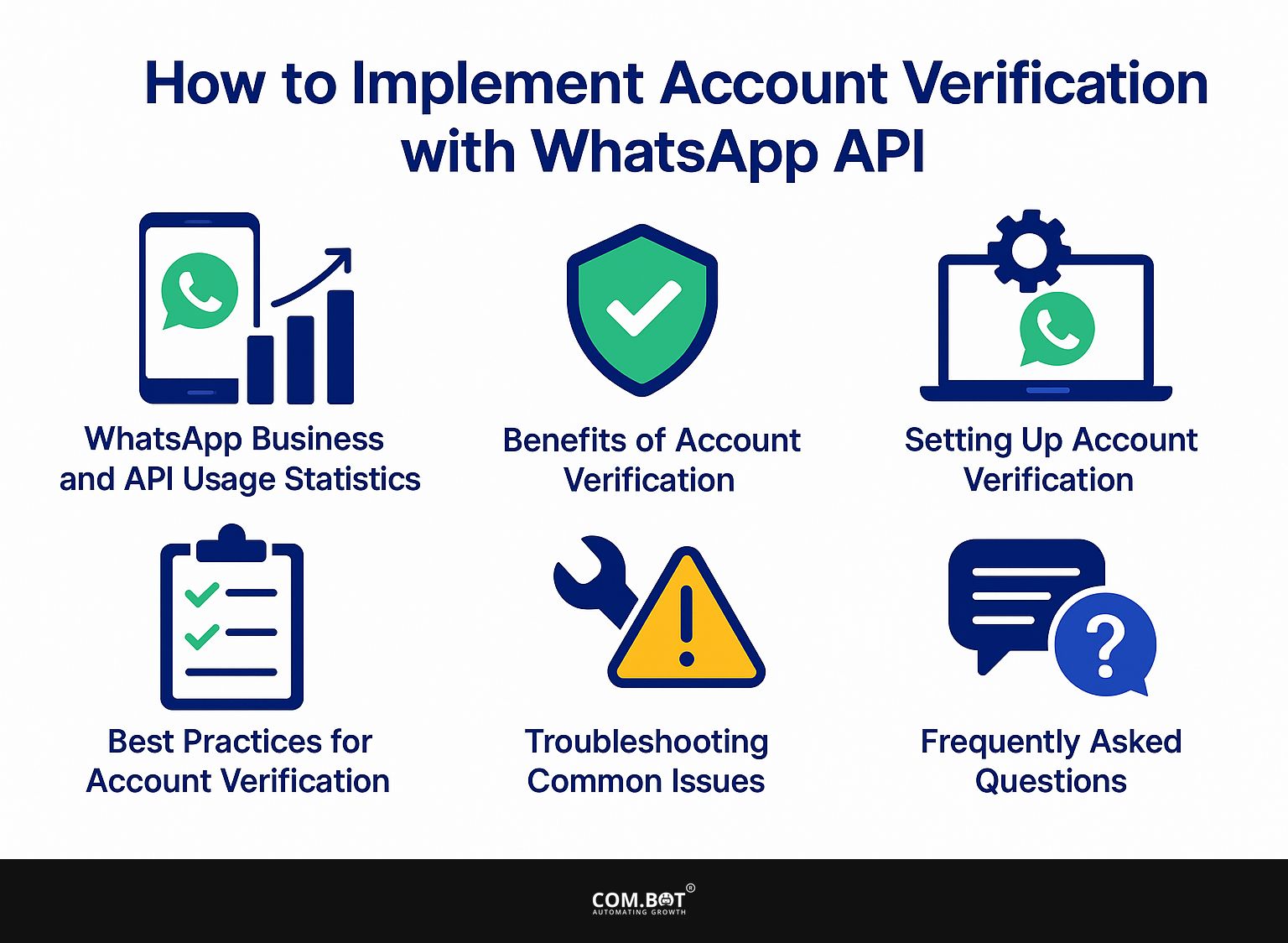
In today’s digital landscape, ensuring secure communication between businesses and users is paramount. The WhatsApp API offers a powerful solution for account verification, enhancing both security and user trust.
This article looks at the benefits of using account verification with the WhatsApp API, guiding you through the setup process, sharing best practices for privacy protection, and troubleshooting common issues. By the end, you’ll be well-equipped to optimize your verification process and enhance your user experience.
Key Takeaways:
- Increase security and user trust by implementing account verification with WhatsApp API.
- Setting up account verification is easy. You need a WhatsApp Business Account and to connect it with your platform.
- Protect user privacy and improve the verification process by applying best practices and solving typical problems.
- 1 WhatsApp Business and API Usage Statistics
- 2 WhatsApp Business and API Usage Statistics
- 3 Benefits of Account Verification with WhatsApp API
- 4 Setting Up Account Verification with WhatsApp API
- 5 Best Practices for Account Verification with WhatsApp API
- 6 Troubleshooting Common Issues
- 7 Frequently Asked Questions
- 7.1 1. What is the WhatsApp API and how can it be used for account verification?
- 7.2 2. How does account verification through WhatsApp API work?
- 7.3 3. Can I customize the account verification process with WhatsApp API?
- 7.4 4. What are the benefits of using WhatsApp API for account verification?
- 7.5 5. Do I need to have a WhatsApp business account to use the API for account verification?
- 7.6 6. Is there a cost to use the WhatsApp API for account verification?
What is WhatsApp API?
The WhatsApp API is a powerful messaging tool that lets businesses communicate with their users on WhatsApp. It is a key method for companies to engage and help their customers. With this API, businesses can send notifications, handle verifications, and simplify communication with customers to improve user experience and increase conversion rates.
With its wide adoption in countries like Brazil, India, and Germany, the WhatsApp API is revolutionizing how companies approach digital communication and customer outreach. This API does more than just basic messaging. It enables automatic responses, customized promotional activities, and efficient customer support that can significantly improve brand loyalty and customer satisfaction.
By integrating WhatsApp Business accounts, organizations can manage inquiries seamlessly while employing rich media formats, such as images and videos, to create a more engaging dialogue.
The API includes tools that help businesses monitor user activity, offering useful information to improve their communication plans.
As users increasingly lean toward instant messaging for business interactions, the WhatsApp API stands out as an essential tool for enhancing user engagement and driving business growth.
WhatsApp Business and API Usage Statistics
WhatsApp Business and API Usage Statistics
Enhance your user engagement strategies by understanding the impact of rich media messaging. Learn more about how Com.bot’s Rich Media Messaging can transform your communication and create more dynamic interactions.
Global Engagement and Communication: Average Open and Click Rates
Global Engagement and Communication: Global Usage
Business API and Marketing Impact: Business API Engagement
Business API and Marketing Impact: Cost and Efficiency
The WhatsApp Business and API Usage Statistics provides a complete look at how the platform connects with users worldwide and influences business talks and advertising. With an average open rate of 98% and a click-through rate of 52.5%, WhatsApp presents a highly effective channel for businesses to reach their audience. These impressive engagement metrics highlight the platform’s ability to capture user attention and drive interaction, surpassing traditional email marketing benchmarks.
Global Usage Data highlights WhatsApp’s wide usage, with 100 billion messages sent daily by 2.5 billion users across 180 countries. The widespread use shows that WhatsApp is very important for communication worldwide, serving as a key tool for both personal and business exchanges.
The Business API and Marketing Impact metrics reveal significant advantages for companies using WhatsApp’s services. With 5 million businesses leveraging the API, the platform helps reduce cart abandonment rates by 25%, indicating its efficacy in enhancing customer engagement and sales processes. Additionally, there is a 40% reduction in customer service costs and a 28% increase in conversion rates This demonstrates how the API can simplify processes and increase profits.
- Cost and Efficiency: The 15% estimated growth in API adoption shows that businesses are now seeing how WhatsApp can improve communication, reduce costs, and strengthen customer relationships.
In summary, the WhatsApp Business and API Usage Statistics highlight the platform’s strong involvement and impact in online communication. The high open and click rates give businesses an effective way to market directly, while using APIs improves how businesses run and how customers feel. As more companies use WhatsApp in their plans, the platform continues to influence the way businesses communicate.
Benefits of Account Verification with WhatsApp API
Verifying accounts through WhatsApp API has many benefits, improving the safety of user interactions and increasing trust between users and businesses.
By using One-Time Passcode (OTP) verification, companies can confirm that only real users access their services. This reduces fraud and improves the reliability of messaging. This verification process increases security and makes users feel safer when dealing with verified businesses, which enhances their experience.
Additionally, integrating multi-factor authentication solutions can further strengthen this process. For example, the Com.bot MFA & Auth Bot offers an effective method to ensure secure user verification.
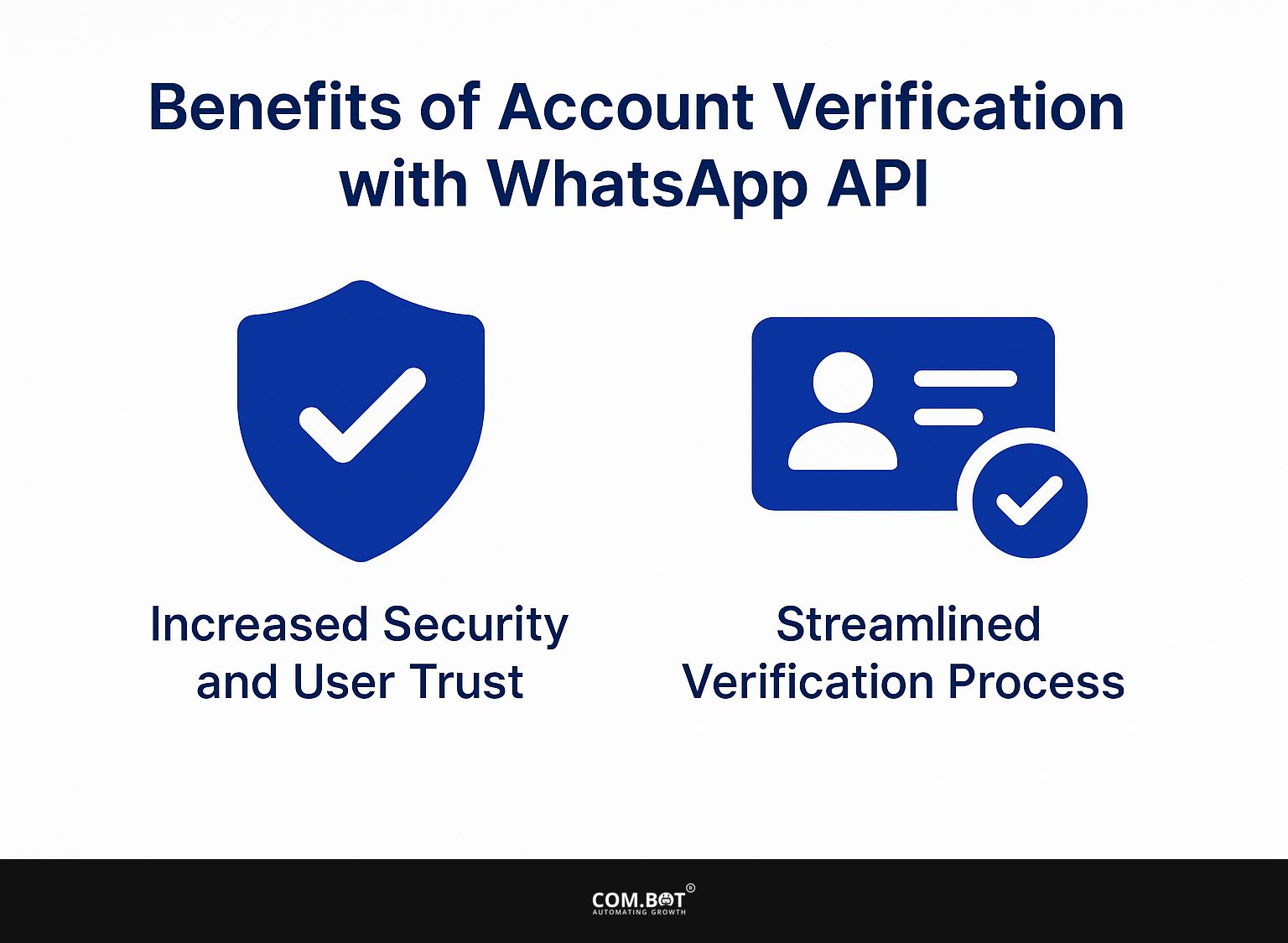
1. Increased Security and User Trust
The integration of OTP verification through WhatsApp significantly increases security and user trust, ensuring that only authentic users have access to their accounts and services.
By automating the verification process, businesses can reduce the risks of unauthorized access and make their messaging channels more secure. This active method protects sensitive information and highlights the value of privacy in online communication. Users want to be sure their data is safe, so putting these protections in place helps build their trust in the platform.
The seamless nature of OTP authentication minimizes friction during the user experience, allowing for efficient interactions while maintaining high security standards.
By focusing on these verification steps, businesses show their careful attention to cybersecurity and their dedication to creating a space where users feel safe and appreciated online.
2. Streamlined Verification Process
Streamlining the verification process using WhatsApp API facilitates quicker and more efficient interactions between businesses and users, enhancing the overall user experience.
By using WhatsApp to send and check OTPs automatically, businesses can speed up the process for users to prove their identity, which can lead to more successful transactions. This efficiency keeps users interested and promotes continued use of the messaging application, which helps businesses improve their customer support.
This innovative approach to communication allows for real-time status updates, which keeps users informed and engaged throughout the verification process.
Getting messages straight to their favorite app makes users feel dependable and confident, turning what was once a complicated task into a smoother process. The built-in features of the WhatsApp API decrease mistakes and make communication easier, helping businesses contact their customers more easily.
In the end, this better interaction can greatly affect user happiness and commitment, encouraging them to return and use the app again.
Setting Up Account Verification with WhatsApp API
Setting up account verification with the WhatsApp API is simple. First, create a WhatsApp Business Account and link the API to your existing systems for easy communication and user checks.
Services like Telesign and Twilio provide reliable API connections, making it easier for businesses to send OTPs and manage verification tasks quickly. To explore how API integrations can enhance automation in your processes, our Com.bot API Integration Bot offers valuable insights.
This setup makes logging in safer and easier, which is important for businesses relying on WhatsApp as their primary messaging tool.
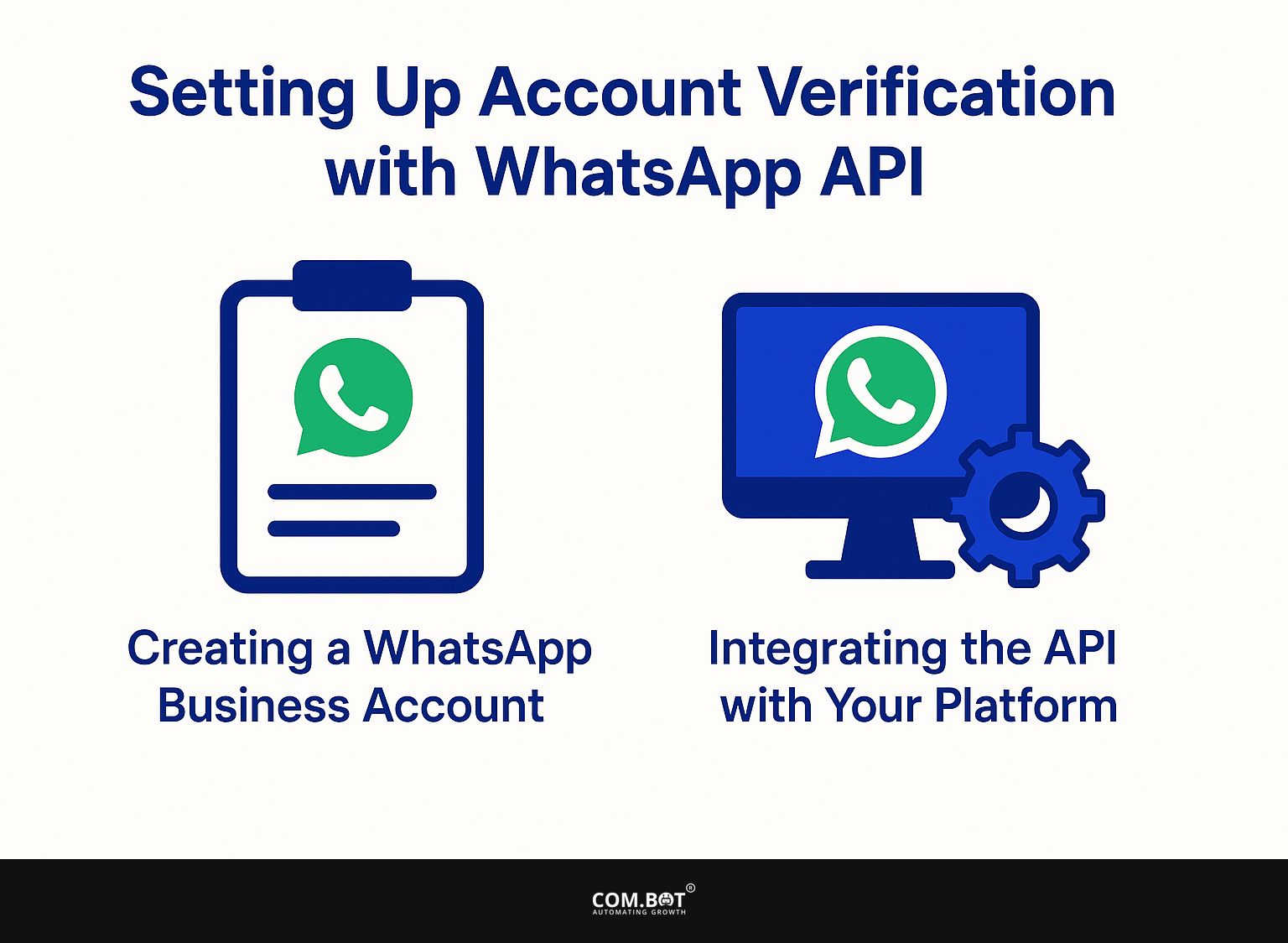
1. Creating a WhatsApp Business Account
To set up a WhatsApp Business Account, companies should complete an easy installation process that lets them use the full capabilities of the WhatsApp API for communication and engaging with users. Setting up an account requires you to verify your phone number, create business profiles, and follow WhatsApp’s rules. This is important to keep good communication with users.
After setting up, the WhatsApp Business Account allows companies to communicate with customers using automatic messages, alerts, and one-time password checks.
- The initial step requires selecting a dedicated business phone number that is not associated with any personal accounts.
- Afterward, businesses must download the WhatsApp Business app and complete the sign-up process by inputting the chosen number and receiving a verification code.
- After users are verified, they can set up a detailed business profile with information such as the business name, a brief description, operating hours, and website links, which helps build customer confidence.
- It’s important to read and follow WhatsApp’s commerce and business rules to use messaging responsibly.
- When everything is set up, users can use messaging tools to communicate effectively, resulting in meaningful interactions and smooth customer experiences.
2. Integrating the API with Your Platform
Linking the WhatsApp API to your system is important for businesses to improve messaging and make account verification easier. This integration typically requires the utilization of an account SID from services like Twilio, allowing for seamless communication between your application and WhatsApp’s messaging infrastructure.
By creating this link, businesses can quickly send OTPs, alerts, and other important messages straight to users, greatly enhancing communication and user satisfaction.
Together with the account SID, businesses need to make sure their software can process webhook events to get instant updates about message deliveries and how users interact. With the WhatsApp API, companies can set up automatic replies for customer support, send custom messages to users, and manage accounts more easily.
By using these features, organizations can improve how they run their operations and develop better customer relationships by communicating in a timely and relevant manner. The strong security measures with this API give users extra confidence that their data is treated with great care.
Best Practices for Account Verification with WhatsApp API
Using good methods for account verification with the WhatsApp API is important for keeping user privacy and secure messaging. By following these methods, businesses can improve their verification steps while sticking to rules and meeting user needs.
This means using safe methods to send OTPs, protecting user data, and making the verification process user-friendly, all of which help build trust and reliability in digital communications. For an extensive analysis of this trend, our comprehensive study of the Com.bot Insurance Quote Bot provides valuable insights on how automated systems can enhance user experience while ensuring security.
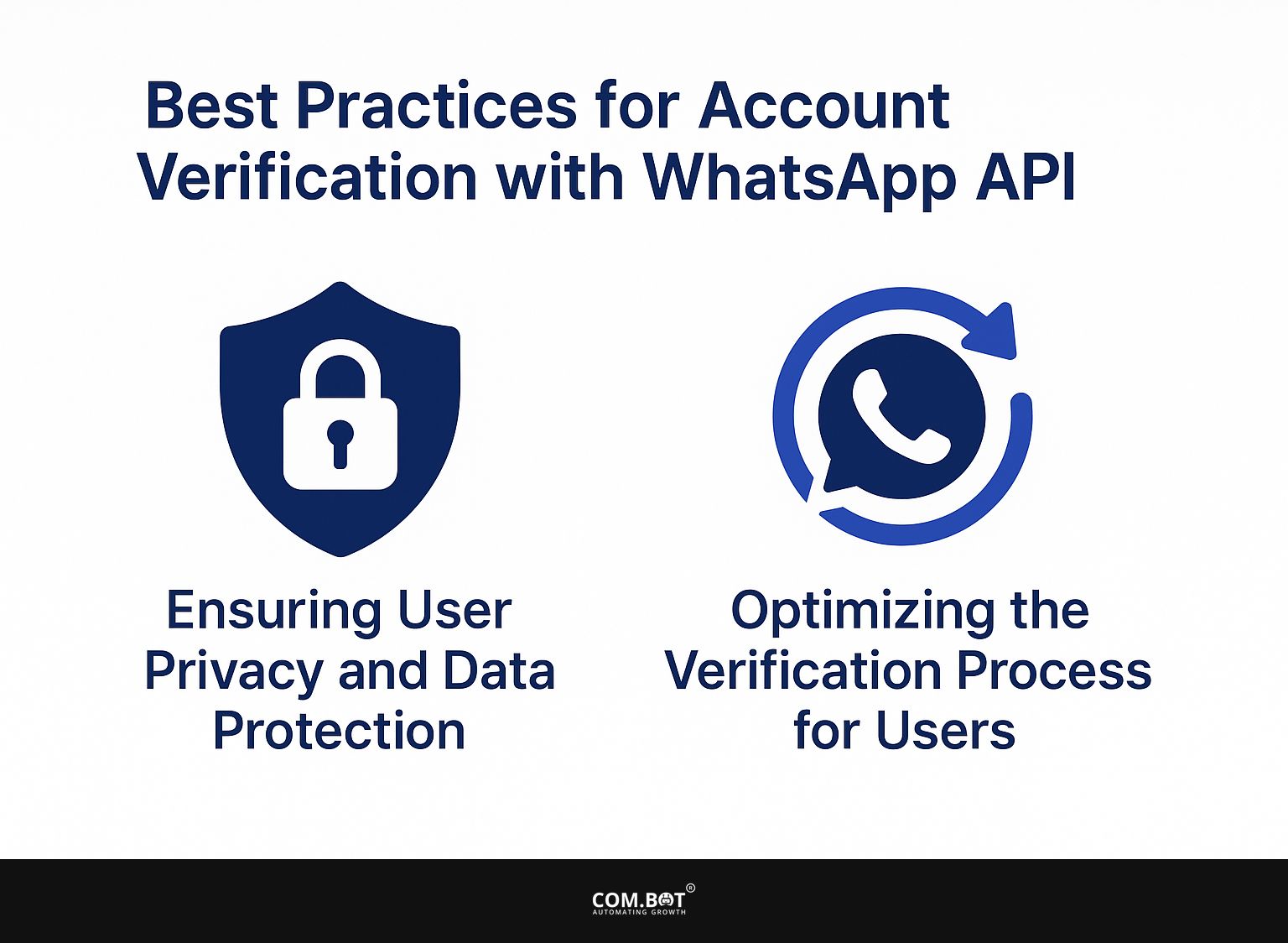
1. Ensuring User Privacy and Data Protection
Ensuring user privacy and data protection is paramount when implementing account verification through the WhatsApp API, as users need to feel safe when sharing their information.
Businesses should use thorough data protection measures that follow regulations, keeping personal data safe during verification. This involves using secure methods for sending one-time passwords and clear communication about how user information will be handled, building trust and assurance in the messaging app.
Adding end-to-end encryption to all communications will improve security by stopping unauthorized access to private information. Businesses should implement multi-factor authentication to add an extra layer of verification, ensuring that only legitimate users can gain access to their accounts.
Regular audits of data handling practices can also help identify vulnerabilities, allowing companies to quickly address potential issues.
By focusing on user privacy and using these practical strategies, organizations meet legal requirements and create trust, encouraging users to stay active and loyal.
2. Improving the User Verification Process
Improving the way users are verified using the WhatsApp API can make their experience better and increase their interaction with your business. This can be achieved by simplifying the OTP delivery and confirmation steps, offering user-friendly messaging templates that guide them through the process.
By simplifying the verification process, businesses can make it easier for users and increase their happiness, which is important for staying ahead of competitors. Introducing features such as real-time status updates can provide reassurance to users during the verification process, ensuring they know what’s happening with their request.
Incorporating options for alternative authentication methods can cater to diverse user preferences, allowing for flexibility in how they complete verification.
Businesses should also focus on providing clear and concise instructions within the messaging, minimizing any potential confusion. By using these methods, the verification process becomes simple and clear, building trust and encouraging users to use the services more.
Troubleshooting Common Issues
Finding and fixing common problems with the WhatsApp API is important for ensuring account verification and messaging work without issues. Users might encounter various error messages while using the service.
Identifying these early and providing effective solutions help businesses improve user experience and minimize service interruptions. Common issues include:
- Failed delivery of one-time passwords (OTPs)
- Problems with verification codes
- Account compliance errors
All requiring quick action to keep messaging seamless.
Common Error Messages and How to Resolve Them
Many error messages when using the WhatsApp API can usually be fixed with simple troubleshooting steps. This helps users get their OTPs and finish the verification process. Typical errors may include issues like message delivery failures, invalid codes, or problems with the account setup, all of which can hinder the user experience.
By providing clear instructions on resolving these issues, businesses can increase user satisfaction and maintain dependable messaging channels.
For instance, a common error might be the ‘Message not delivered’ notification, which often stems from issues such as blocked contacts or incorrect phone numbers.
To solve this, users should first check the recipient’s information and make sure their internet connection is reliable. Similarly, the ‘Invalid OTP’ message can occur when users mistype the verification code or attempt to use an expired one; in such cases, it’s advisable to request a new OTP and double-check the input.
By addressing these problems, users can improve how they handle messaging on the platform, making it more pleasant and less annoying.
Frequently Asked Questions
1. What is the WhatsApp API and how can it be used for account verification?
The WhatsApp API is a set of tools and interfaces that allows businesses to integrate the popular messaging app into their systems. It can be used for a variety of purposes, including account verification, which enables businesses to verify the identity of their users through the app.
2. How does account verification through WhatsApp API work?
When someone creates an account, they will need to provide their phone number. The WhatsApp API will then send a verification code to that number, which the user will need to enter in order to confirm their identity. This confirms the account is connected to a real phone number.
3. Can I customize the account verification process with WhatsApp API?
Yes, businesses can customize the account verification process to fit their specific needs. This includes the design and wording of the verification message, as well as the number of attempts a user has to enter the verification code before it expires.
4. What are the benefits of using WhatsApp API for account verification?
Using WhatsApp API for account verification can provide a more secure and efficient process for businesses. It also allows for a seamless user experience, as most people are already familiar with using WhatsApp and will likely have it installed on their phone.
5. Do I need to have a WhatsApp business account to use the API for account verification?
Yes, businesses will need to have a WhatsApp business account in order to use the API for account verification. This is to make sure the account is used for real business activities and follows WhatsApp’s rules.
6. Is there a cost to use the WhatsApp API for account verification?
Yes, there may be a cost associated with using the WhatsApp API for account verification, depending on the provider and the specific services needed. It is best to research and compare different providers to find the best option for your business’s needs and budget.
